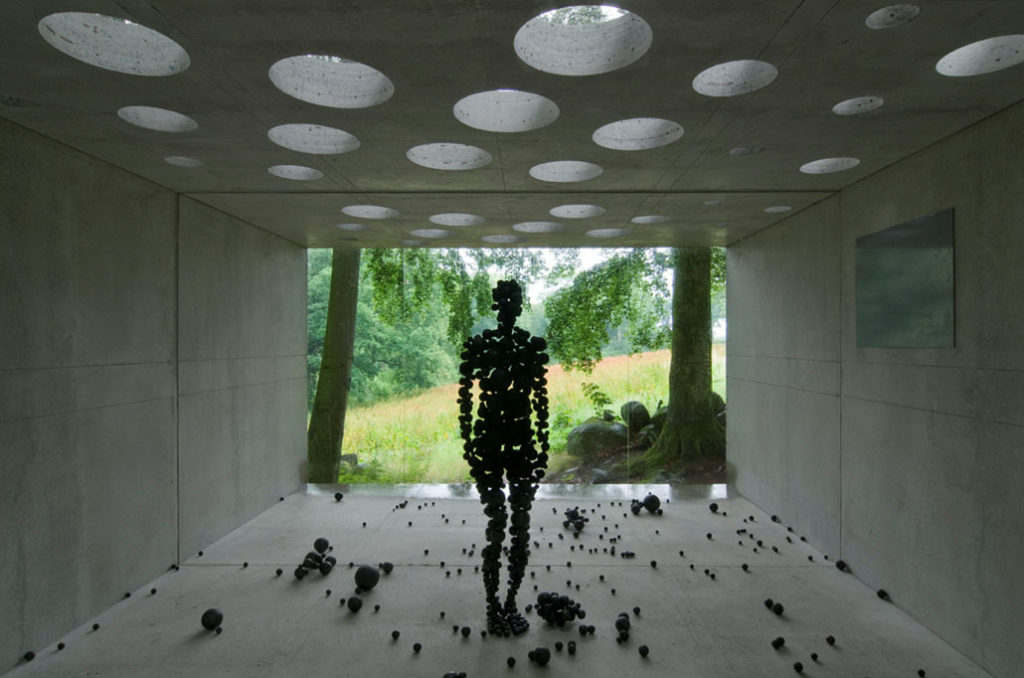Mothership with Standing Matter

Antony Gormley (f.1950) is a renowned British sculptor who largely creates works based on the human body. He very often uses his own body as a prototype for the sculptures, so that they have the same physical dimensions as his own. The 190 cm tall figure in Mothership with Standing Matter (2007-8) is a characteristic example of this. The sculpture does not have a uniform cohesive shape, but is composed of steel globes of different sizes, which gives it a fleeting and transparent appearance. Some of the globes have apparently fallen off the body and scattered onto the floor. Despite the medium’s definitive solidity and weight – the sculpture weighs all of 600 kilos – it appears as though it is in the process of dissolving, almost disappearing in thin air. The sculpture is mounted inside a simple and compact architectonic space designed by the Norwegian architectural firm Snøhetta, which creates an effective contrast to the mutable character of the figure. And the sphere-shaped forms in the body and on the floor are repeated in a startling way in the circular widows in the ceiling.Gormley works in a number of different materials; clay, fibreglass, cast iron, steel, metal, granite and more. And although he often uses his own body as a measuring rod, some of his most famous works are much larger. For instance, the enormous Angel of the North (1998) which is mounted on a hill near Gateshead in the northeast of England. The sculpture, or angel, measures 20 metres in height and has a 54-metre wingspan. Another such one is the 11-metre tall granite sculpture Man from the Sea from 1995 – incidentally, one of Gormley’s first large sculptures in stone – which stands a short distance into the Ransfjord in Mo i Rana, Norway, as part of Artscape Nordland. Apart from size or format, Antony Gormley’s works are characterised by a simple and forthright monumentality. In various ways, his major focus and theme is the role of human beings in society and their relationship to each other, whether they find themselves in hectic, urban situations or in deserted and totally remote locations.
OWG